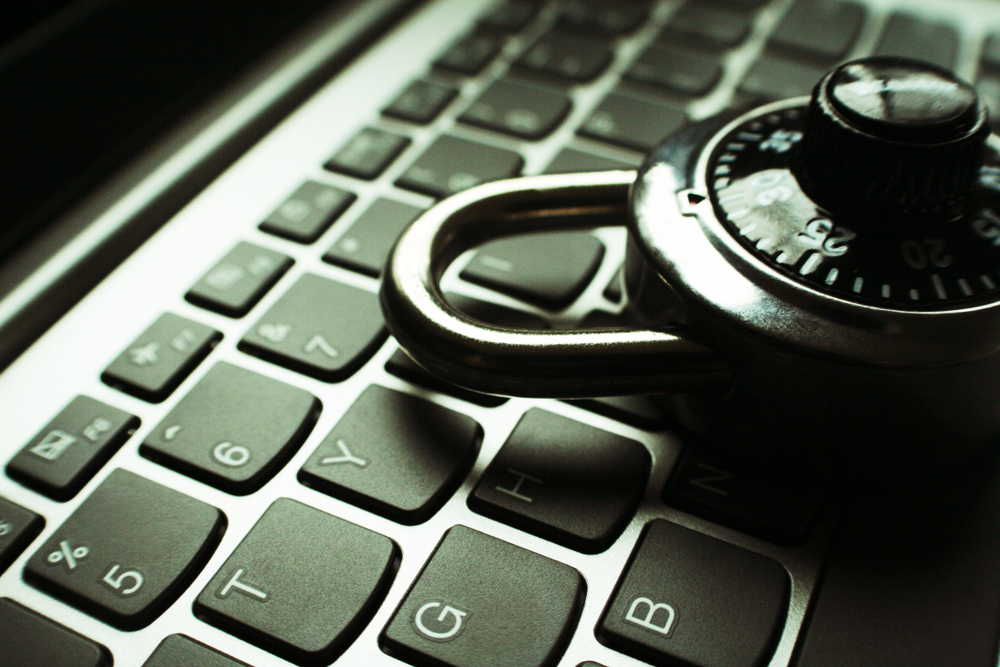Business identity theft is a growing concern for companies of all sizes. Hackers and cybercriminals are constantly finding new ways to steal sensitive information and use it for fraudulent purposes. This can include stealing financial information, customer data, and even company trade secrets. To prevent business identity theft, it is important to take proactive measures both online and physically.
One of the most important steps in preventing business identity theft is to secure all online accounts and networks. This includes using strong passwords, regularly updating software and security protocols, and limiting access to sensitive information. It is also important to educate employees on safe online practices and to regularly monitor network activity for any suspicious behavior.
In addition to online security measures, physical security is also crucial in preventing business identity theft. This includes securing physical documents and equipment, limiting access to sensitive areas, and properly disposing of confidential information. By taking a comprehensive approach to security, businesses can effectively protect themselves from the threat of identity theft.
- Understanding Business Identity Theft
- Securing Online Information
- Physical Methods
- Financial Safeguards
- Legal and Compliance Measures
- Responding to Identity Theft
Understanding Business Identity Theft
Business identity theft is a type of fraud where a criminal steals the identity of a business. The thief then uses the stolen identity to open credit accounts, take out loans, and make purchases in the name of the business. Business identity theft can cause significant financial damage to a company, and it can be challenging to detect and correct.
There are two main types of business identity theft: online and physical. Online identity theft occurs when a criminal gains access to a company’s online accounts, such as email, social media, and banking. Physical identity theft occurs when a criminal steals physical documents, such as mail, checks, and credit cards.
To prevent business identity theft, companies should take several steps. First, they should educate their employees about the risks of identity theft and how to prevent it. This includes training employees on how to create strong passwords, how to identify phishing emails, and how to secure physical documents.
Second, companies should implement strong security measures to protect their online accounts. This includes using two-factor authentication, regularly changing passwords, and monitoring accounts for suspicious activity.
Third, companies should secure physical documents by using secure mailboxes, shredding sensitive documents, and locking up important files.
By taking these steps, companies can reduce their risk of business identity theft and protect their financial well-being.
Securing Online Information
In today’s digital age, businesses must take extra precautions to secure their online information. Here are a few tips to help prevent business identity theft online:
- Use strong passwords: Passwords should be at least 12 characters long and include a mix of upper and lowercase letters, numbers, and symbols. Avoid using personal information such as birthdates or names as part of the password.
- Enable two-factor authentication: Two-factor authentication adds an extra layer of security to your online accounts. This requires users to provide a second form of identification, such as a code sent to their phone, in addition to their password.
- Keep software up to date: Regularly updating software can help prevent security vulnerabilities from being exploited by hackers. This includes operating systems, web browsers, and any other software used by the business.
- Use a virtual private network (VPN): A VPN encrypts internet traffic and masks the user’s IP address, making it more difficult for hackers to intercept sensitive information.
- Be cautious of phishing scams: Phishing scams are a common tactic used by hackers to steal sensitive information. Businesses should educate their employees on how to identify and avoid these scams.
- Use a document verification API: Document verification reduces the risk of business identity theft by ensuring that all submitted documents are authentic and valid. It helps in verifying the identities of individuals and businesses, preventing fraudulent activities such as using fake or stolen documents to impersonate legitimate entities. By implementing real-time verification processes, companies can confirm the accuracy and legitimacy of documents, thereby safeguarding against identity theft. This enhances overall security, maintains the integrity of business transactions, and builds trust with clients and partners
By implementing these measures, businesses can significantly reduce the risk of identity theft and protect their online information.
Physical Methods
Preventing business identity theft physically involves securing sensitive information and ensuring its proper disposal. Here are some ways to safeguard your business from physical identity theft:
- Secure the office: Ensure that the office is secure, and only authorized personnel are allowed to enter. Keep sensitive documents and files in locked cabinets or rooms.
- Shred sensitive documents: shred sensitive documents before disposing of them. This ensures that the information cannot be retrieved from the trash.
- Safeguard electronic devices: Ensure that electronic devices like laptops and smartphones are password-protected and encrypted. This will prevent unauthorized access to sensitive information in case of theft.
- Dispose of uniforms: Use a uniform destruction service to physically destroy old uniform
By implementing these physical methods, businesses can significantly reduce the risk of identity theft.

Financial Safeguards
Protecting financial information is one of the most important steps in preventing business identity theft. Here are a few financial safeguards that businesses can implement:
- Use Secure Payment Methods: When making payments or receiving payments, ensure that you are using secure payment methods. Use a trusted payment processor and avoid using public Wi-Fi networks when making financial transactions.
- Monitor Accounts Regularly: Regularly monitor all business accounts, including bank accounts, credit cards, and online payment accounts. Look for any unusual transactions or charges and report any suspicious activity immediately.
- Implement Two-Factor Authentication: Two-factor authentication (2FA) adds an extra layer of security to your accounts. By requiring a second form of authentication, such as a code sent to a mobile device, it makes it harder for hackers to gain access to your accounts.
- Protect Personal Information: Keep personal information, such as social security numbers and credit card numbers, safe and secure. Only share this information when necessary and with trusted individuals or organizations.
- Invest in Cyber Insurance: Cyber insurance can help protect businesses from financial losses due to cyber attacks and identity theft. It is important to research and choose a policy that fits your business needs and budget.
By implementing these financial safeguards, businesses can help prevent identity theft and protect their financial information from cyber criminals.
Legal and Compliance Measures
Businesses must take legal and compliance measures to protect themselves from identity theft. Here are some measures that can be taken:
- Create a Privacy Policy: Businesses should create a privacy policy that outlines how they collect, use, and protect personal information. This policy should be easily accessible on the company’s website and should be updated regularly.
- Train Employees: Employees should be trained on how to handle sensitive information and how to identify potential scams or phishing attempts. They should also be educated on the company’s privacy policy and the importance of protecting personal information.
- Secure Physical Documents: Physical documents that contain sensitive information should be stored in a secure location, such as a locked cabinet or safe. Access to these documents should be limited to authorized personnel only.
- Use Encryption: Businesses should use encryption to protect sensitive information that is transmitted online. This can include using secure email services or encrypting files before they are sent.
- Comply with Regulations: Businesses must comply with relevant regulations, such as the General Data Protection Regulation (GDPR) or the California Consumer Privacy Act (CCPA). Failure to comply with these regulations can result in significant fines and legal action.
By implementing these legal and compliance measures, businesses can significantly reduce their risk of identity theft and protect their customers’ personal information.
Responding to Identity Theft
If a business falls victim to identity theft, it is important to take swift action to minimize the damage. Here are some steps that can be taken to respond to identity theft:
- Contact the Authorities: The first step is to contact the authorities, such as the police and the Federal Trade Commission (FTC), to report the identity theft. This will help to create a record of the incident, which can be useful in resolving any issues that arise later.
- Notify Creditors and Banks: The next step is to notify all creditors and banks associated with the business’s accounts. This includes credit card companies, banks, and any other financial institutions. The business should inform them of the identity theft and request that they freeze the accounts.
- Review Accounts and Statements: The business should review all of its accounts and statements to identify any unauthorized transactions. This includes bank statements, credit card statements, and any other financial records. Any suspicious activity should be reported to the authorities and the relevant financial institutions.
- Change Passwords and PINs: The business should change all of its passwords and PINs associated with its accounts. This will help to prevent any further unauthorized access to the accounts.
- Monitor Credit Reports: The business should monitor its credit reports to ensure that no new accounts have been opened in its name. This can be done by requesting a free credit report from each of the three major credit bureaus (Equifax, Experian, and TransUnion) once a year.
By taking these steps, a business can minimize the damage caused by identity theft and prevent it from happening again in the future.
